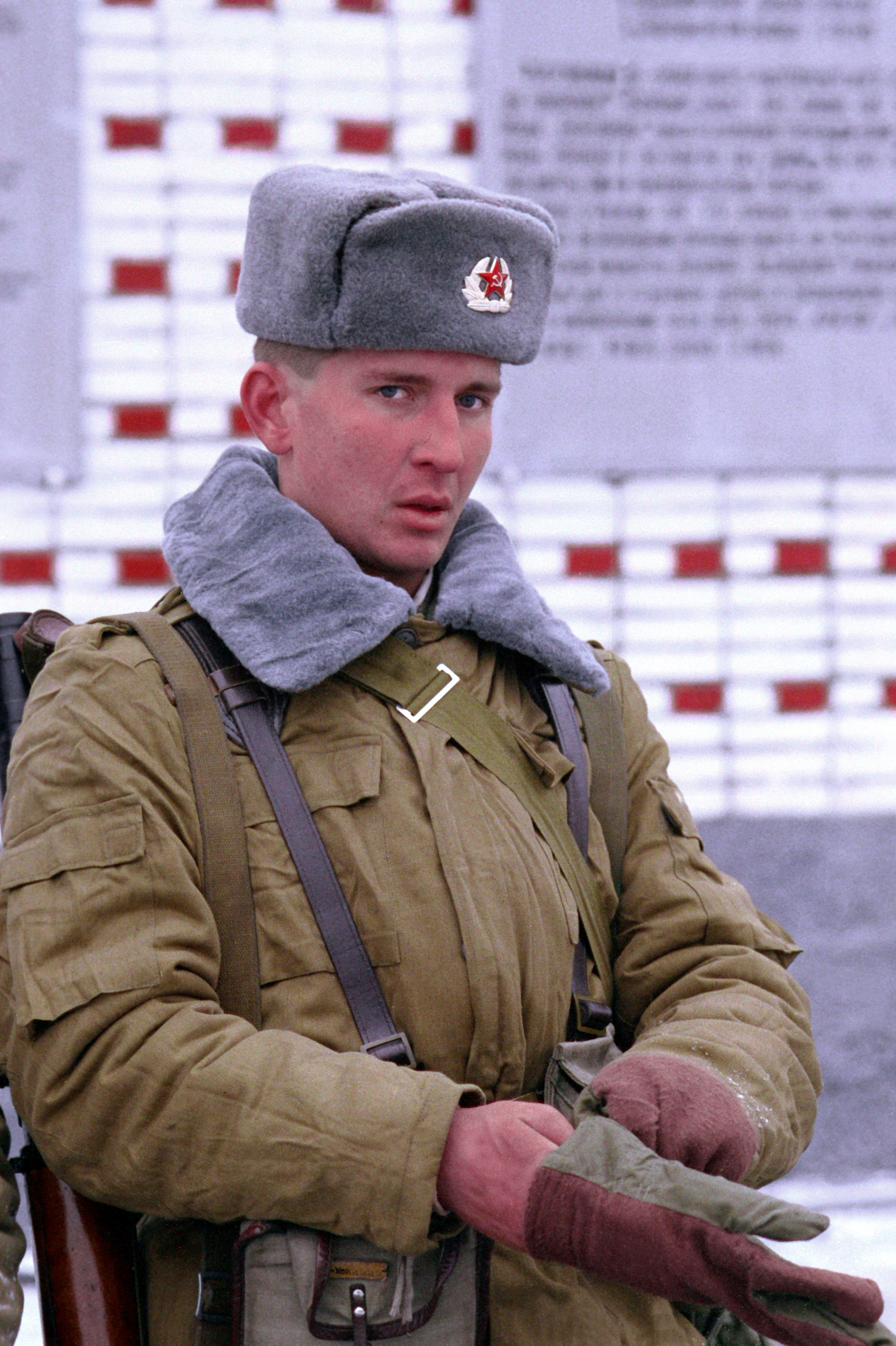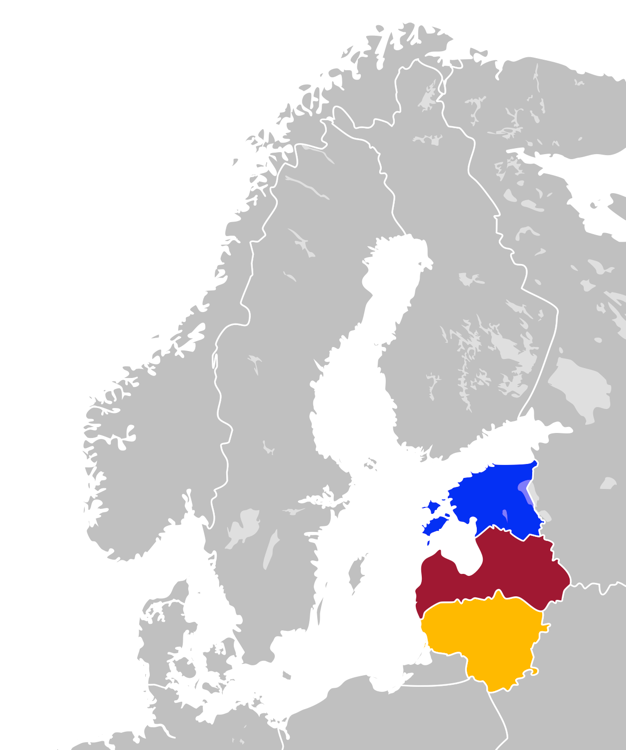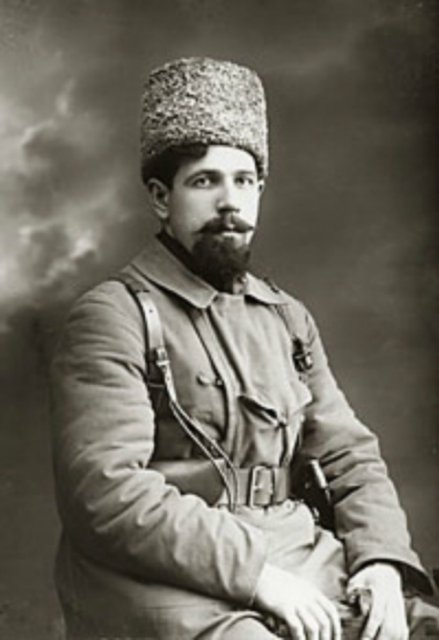|
6th Rifle Division (Soviet Union)
The 6th Rifle Division was an infantry division of the Soviet Union's Red Army. Formed multiple times, it participated in several battles, most notably the Soviet westward offensive of 1918–1919, the Estonian War of Independence and the Polish–Soviet War.The division's first formation was awarded the Order of the Red Banner twice and the Order of Suvorov 2nd class for its valor in combat. In November 1945, the division was disbanded. It was briefly reformed in 1955 but disbanded again in 1957. First formation 1918 The division was first formed on May 23, 1918, in Gdov. It was made up of volunteers from Petrograd, soldiers of Pavel Dybenko's volunteer detachment, Red Guards from the regular Army, and workers from Narva and Gdov. Its official designation upon activation was the Gatchina Infantry Division. From May to November 1918, the division was deployed in the vicinity of Ivangorod. On 31 May 1918, it became the 3rd Petrograd Infantry Division. From November 1918 ... [...More Info...] [...Related Items...] OR: [Wikipedia] [Google] [Baidu] |
Soviet Army
The Soviet Ground Forces () was the land warfare service branch of the Soviet Armed Forces from 1946 to 1992. It was preceded by the Red Army. After the Soviet Union ceased to exist in December 1991, the Ground Forces remained under the command of the Commonwealth of Independent States until it was formally abolished on 14 February 1992. The Soviet Ground Forces were principally succeeded by the Russian Ground Forces in Russian territory. Outside of Russia, many units and formations were taken over by the post-Soviet states; some were withdrawn to Russia, and some dissolved amid conflict, notably in the Caucasus. While the Ground Forces are commonly referred to in English language sources as the Soviet Army, in Soviet military parlance the term '' armiya'' (army) referred to the combined land and air components of the Soviet Armed Forces, encompassing the Ground Forces as well as the Strategic Rocket Forces, the Air Defence Forces, and the Air Forces. After World W ... [...More Info...] [...Related Items...] OR: [Wikipedia] [Google] [Baidu] |
Dmitri Parsky
Dmitri Pavlovich Parsky (; – 20 December 1921) was an Imperial Russian Army general during World War I, who fought on the Eastern Front. Life Parsky was born to the family of Pavel Parsky and Natalya Ladyzhenskaya, nobles from the Epifansky district of the Tula Governorate. In 1893 he attended the General Staff Academy. He was among early generals advocating military reform following the disastrous Russo-Japanese War. He advocated for better education for officers, equal and fair pay, and better prospects for promotion. He advocated soldiers be treated as individuals and their rights under the law be enforced by unit commanders, and a promotion system based on merit. During World War I, he commanded the 12th Army from 20 July to 9 September 1917 and the 3rd Army from 9 September 1917 to 8 November 1917. He was the first battle-experienced Tsarist General to offer his services to the Red Army, explaining his viewpoint thus: :''"I am far from this Bolshevism you preach. B ... [...More Info...] [...Related Items...] OR: [Wikipedia] [Google] [Baidu] |
Baltic States
The Baltic states or the Baltic countries is a geopolitical term encompassing Estonia, Latvia, and Lithuania. All three countries are members of NATO, the European Union, the Eurozone, and the OECD. The three sovereign states on the eastern coast of the Baltic Sea are sometimes referred to as the "Baltic nations", less often and in historical circumstances also as the "Baltic republics", the "Baltic lands", or simply the Baltics. The term "Balticum" is sometimes used to describe the region comprising the three states; see e.g All three Baltic countries are classified as World Bank high-income economy, high-income economies by the World Bank and maintain a very high Human Development Index. The three governments engage in intergovernmental and parliamentary cooperation. There is also frequent cooperation in foreign and security policy, defence, energy, and transportation. Etymology The term ''Baltic'' stems from the name of the Baltic Sea – a hydronym dating back to at least ... [...More Info...] [...Related Items...] OR: [Wikipedia] [Google] [Baidu] |
Ivangorod
Ivangorod ( rus, Иванго́род, p=ɪvɐnˈɡorət; ; ) is a town in Kingiseppsky District of Leningrad Oblast, Russia, located on the east bank of the Narva river which flows along the Estonia–Russia international border, west of Saint Petersburg, east of Tallinn, Estonia. The town's population was recorded as As of 2025, the population of Ivangorod was estimated to be 9,878. Ivangorod is a major border crossing point and a railway station on the Tallinn–Saint Petersburg line. It is located just opposite to the Estonian town of Narva. The town is the site of the Ivangorod Fortress, a prominent fortification monument of the 15th and the 16th centuries. History The fortress, established in 1492 during the reign of Ivan III, the grand prince of Moscow, took its name (literally: Ivan-town — ''gorod'' in Russian means "town" or "city") from that of the tsar. The fortress was built along with a series of other fortifications on the border with Livonia. A bat ... [...More Info...] [...Related Items...] OR: [Wikipedia] [Google] [Baidu] |
Gatchina
Gatchina (, ) is a town and the administrative center of Gatchinsky District in Leningrad Oblast, Russia. It lies south-south-west of St. Petersburg, along the E95 highway which links Saint Petersburg and Pskov. Population: It was previously known as ''Khotchino'', ''Gatchina'' (until February 14, 1923), ''Trotsk'' (until August 2, 1929), and ''Krasnogvardeysk'' (until January 28, 1944). Gatchina, the largest town in Leningrad Oblast, is best known as the location of the Great Gatchina Palace, one of the main residences of the Russian Imperial Family during the 18th and 19th centuries. The historic center and Gatchina Palace are part of the UNESCO World Heritage Site's "Historic Centre of Saint Petersburg and Related Groups of Monuments". Another popular tourist attraction in Gatchina is the Prioratsky Palace. Gatchina has placed highly in quality-of-life rankings in Russia. History Early history Gatchina was first documented in 1499 under the na ... [...More Info...] [...Related Items...] OR: [Wikipedia] [Google] [Baidu] |
Narva
Narva is a municipality and city in Estonia. It is located in the Ida-Viru County, at the Extreme points of Estonia, eastern extreme point of Estonia, on the west bank of the Narva (river), Narva river which forms the Estonia–Russia border, Estonia–Russia international border. As of January 1, 2025, the population of Narva, Estonia, was approximately 52,495, according to data compiled by national statistical bureaus in the Baltic region (source). Narva is Estonia's third largest city after capital Tallinn and Tartu. Narva was nearly completely destroyed in 1944 during World War II. During the Soviet era of Estonia in 1944–1991, the city's original inhabitants were not permitted to return, and immigrant workers from Soviet Russia and other parts of the former Soviet Union (USSR) were introduced. Narva’s population, 65% ethnic Estonian as of the 1934 census, became overwhelmingly non-Estonian in the second half of the 20th century. According to more recent data, 46.7% of t ... [...More Info...] [...Related Items...] OR: [Wikipedia] [Google] [Baidu] |
Red Guards (Russia)
Red Guards () were paramilitary volunteer formations for the "protection of the soviet power", as part of the Bolshevik Military Organizations. The Red Guards consisted primarily of urban workers, peasants, cossacks and partially of soldiers and sailors. Red Guards were a transitional military force of the collapsing Imperial Russian Army and the base formations of Bolsheviks during the October Revolution and the first months of the Russian Civil War. Most of them were formed in the time frame of the Russian Revolution of 1917, and some of the units were reorganized into the Red Army during 1918. The Red Guards formations were organized across most of the former Russian Empire, including territories outside the contemporary Russian Federation such as Finland, Poland, Estonia, Ukraine, and others. They were not centralized and were formed by decision of a local political party and local soviet members. By fighting to protect and extend the power of the Soviets, they aided the ... [...More Info...] [...Related Items...] OR: [Wikipedia] [Google] [Baidu] |
Pavel Dybenko
Pavel Efimovich Dybenko (; ; 16 February 1889 – 29 July 1938) was a Bolsheviks, Bolshevik revolutionary and a leading Soviet Union, Soviet officer and military commander. He was arrested, tortured and executed during the Great Purge and subsequently rehabilitated during the Khrushchev Thaw. Prior to military service Pavel Dybenko was born in Lyudkovo village, Novozybkov ''uyezd'', Chernigov ''guberniya'', Imperial Russia (now Novozybkov, Bryansk Oblast, Russia) into a Ukrainians, Ukrainian peasant family. He was one of six children raised on an eight-acre farm. His parents owned one horse and one cow. In 1907 he started working in the local Treasury department, but was fired as "untrustworthy" due to his political activities. From 1907 onward, Dybenko became active in a Bolshevik group, distributing revolutionary literature, such as the ''People’s Gazette'' and the ''Proletariat'', which spoke to anti-Tsar sympathies, throughout the Novozybkov region. He moved to Riga and ... [...More Info...] [...Related Items...] OR: [Wikipedia] [Google] [Baidu] |
Gdov
Gdov () is a types of inhabited localities in Russia, town and the administrative center of Gdovsky District in Pskov Oblast, Russia, located on the river Gdovka, just from its outflow into Lake Peipus. Population: History It was first mentioned in the beginning of the 14th century, as an outpost guarding the city of Pskov. Between 1431 and 1434, Pskovians built a Gdov Kremlin, fortress there, the remains of which can still be seen. It was attacked on numerous occasions by the Sweden, Swedes and the Polish-Lithuanian Commonwealth (e.g., during the Russo–Swedish War (1590–1595) and the Ingrian War), and captured by the Swedes in 1614, but was finally returned to Russia in 1617 according to the Treaty of Stolbovo. In the course of the administrative divisions of Russia in 1708–1710, administrative reform carried out in 1708 by Peter the Great, Gdov was made a part of Ingermanland Governorate (known since 1710 as Saint Petersburg Governorate). [...More Info...] [...Related Items...] OR: [Wikipedia] [Google] [Baidu] |
Order Of Suvorov
The Order of Suvorov () is a military decoration of the Russian Federation named in honor of Russian Generalissimo Prince Alexander Suvorov (1729–1800). History The Order of Suvorov was originally a Soviet Union, Soviet award established on July 29, 1942 (during World War II) by decision of the Presidium of the Supreme Soviet of the USSR. It was created to reward senior army personnel for exceptional leadership in combat operations. The Order of Suvorov was divided into three classes: 1st class, 2nd class, and 3rd class. Georgi Zhukov became the first recipient of the Order of Suvorov 1st class on January 28, 1943. The Order 1st class was awarded to army commanders for exceptional leadership of combat operations. The Order 2nd class was awarded to corps, division, and brigade commanders for a decisive victory over a numerically superior enemy. The Order 3rd class was awarded to regimental commanders, their chiefs of staff, and battalion and company commanders for outstandin ... [...More Info...] [...Related Items...] OR: [Wikipedia] [Google] [Baidu] |
Order Of The Red Banner
The Order of the Red Banner () was the first Soviet military decoration. The Order was established on 16 September 1918, during the Russian Civil War by decree of the All-Russian Central Executive Committee. It was the highest award of Soviet Russia, subsequently the Soviet Union, until the Order of Lenin was established in 1930. Recipients were recognised for extraordinary heroism, dedication, and courage demonstrated on the battlefield. The Order was awarded to individuals as well as to military units, cities, ships, political and social organizations, and state enterprises. In later years, it was also awarded on the twentieth and again on the thirtieth anniversary of military, police, or state security service without requiring participation in combat (the "Long Service Award" variant). Award history The Russian Order of the Red Banner was established during the Russian Civil War by decree of the All-Russian Central Executive Committee of September 16, 1918. The f ... [...More Info...] [...Related Items...] OR: [Wikipedia] [Google] [Baidu] |
Polish–Soviet War
The Polish–Soviet War (14 February 1919 – 18 March 1921) was fought primarily between the Second Polish Republic and the Russian Soviet Federative Socialist Republic, following World War I and the Russian Revolution. After the collapse of the Central Powers and the Armistice of 11 November 1918, Vladimir Lenin's Soviet Russia annulled the Treaty of Brest-Litovsk and moved forces westward to reclaim the ''Ober Ost'' regions abandoned by the Germans. Lenin viewed the newly independent Poland as a critical route for spreading communist revolutions into Europe. Meanwhile, Polish leaders, including Józef Piłsudski, aimed to restore Poland's First Partition of Poland, pre-1772 borders and secure the country's position in the region. Throughout 1919, Polish forces occupied much of present-day Lithuania and Belarus, emerging victorious in the Polish–Ukrainian War. However, Soviet forces regained strength after their victories in the Russian Civil War, and Symon Petliura, lea ... [...More Info...] [...Related Items...] OR: [Wikipedia] [Google] [Baidu] |







